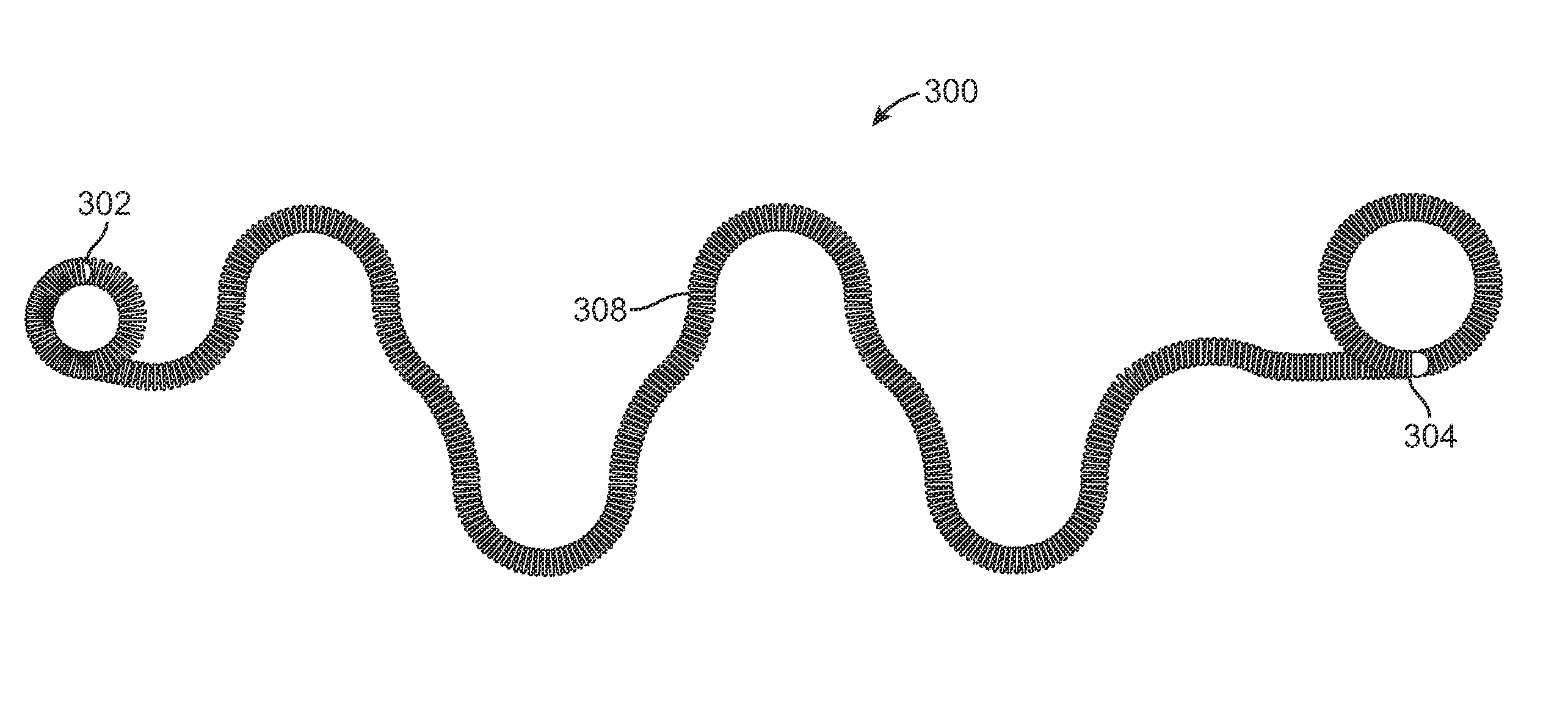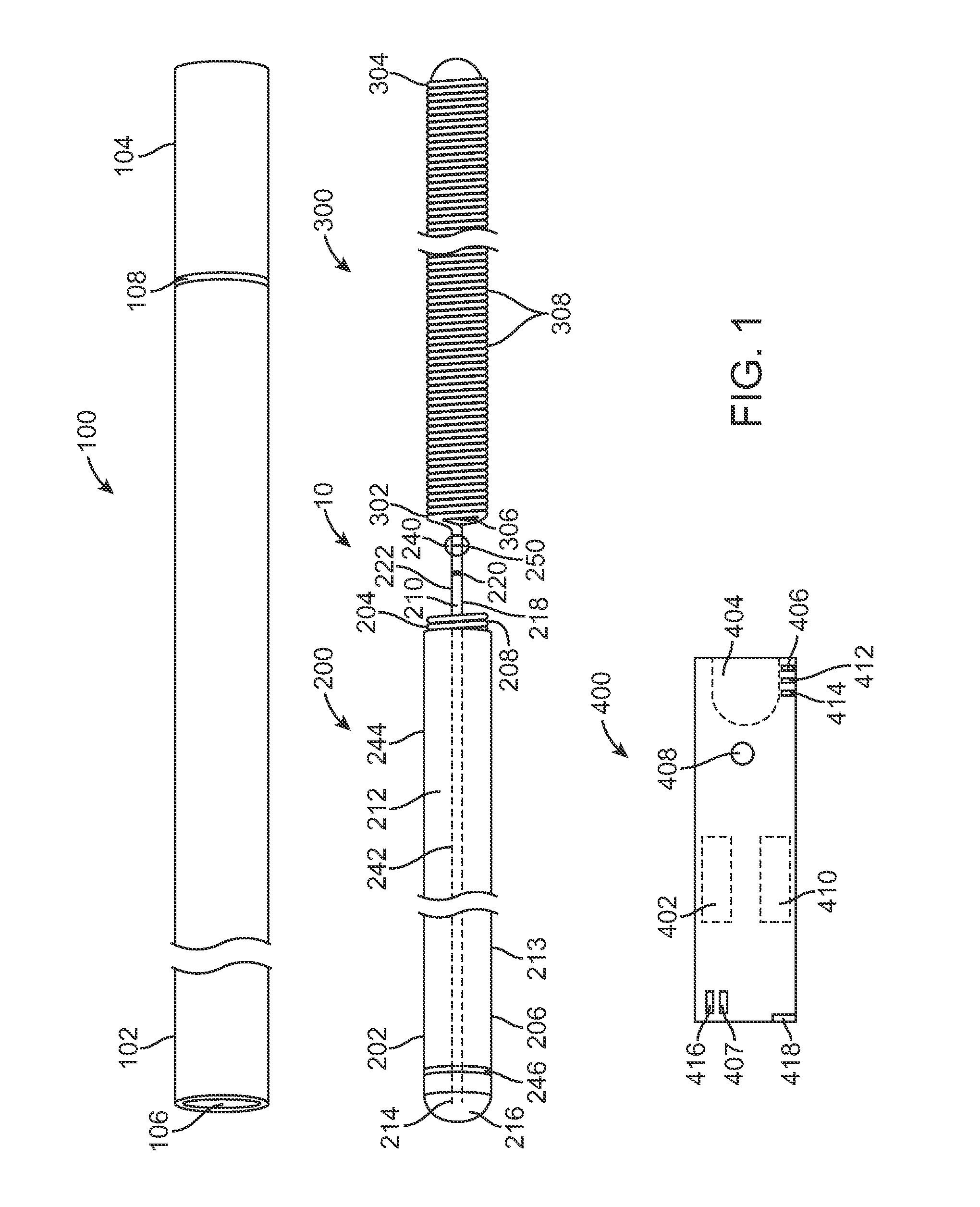Electrical contact for occlusive device delivery system
a technology of electric contact and occlusive device, applied in the field of system and delivery device, can solve the problems of less than optimal conductivity, conductive instability at the junction between the electrical contact, and electrically severable junctions are susceptible to electrolysis and disintegration, so as to improve mechanical stability and reduce variability in detachment times
- Summary
- Abstract
- Description
- Claims
- Application Information
AI Technical Summary
Benefits of technology
Problems solved by technology
Method used
Image
Examples
Embodiment Construction
[0017]FIG. 1 illustrates an occlusive coil delivery system 10 according to one embodiment. The system 10 includes a number of subcomponents or sub-systems. These include a delivery catheter 100, a delivery wire assembly 200, an occlusive coil 300, and a power supply 400. The delivery catheter 100 includes a proximal end 102, a distal end 104, and a lumen 106 extending between the proximal and distal ends 102, 104. The lumen 106 of the delivery catheter 100 is sized to accommodate axial movement of the delivery wire assembly 200. Further, the lumen 106 is sized for the passage of a guidewire (not shown) which may optionally be used to properly guide the delivery catheter 100 to the appropriate delivery site.
[0018]The delivery catheter 100 may include a braided-shaft construction of stainless steel flat wire that is encapsulated or surrounded by a polymer coating. For example, HYDROLENE® is one exemplary polymer coating that may be used to cover the exterior portion of the delivery ca...
PUM
 Login to View More
Login to View More Abstract
Description
Claims
Application Information
 Login to View More
Login to View More - Generate Ideas
- Intellectual Property
- Life Sciences
- Materials
- Tech Scout
- Unparalleled Data Quality
- Higher Quality Content
- 60% Fewer Hallucinations
Browse by: Latest US Patents, China's latest patents, Technical Efficacy Thesaurus, Application Domain, Technology Topic, Popular Technical Reports.
© 2025 PatSnap. All rights reserved.Legal|Privacy policy|Modern Slavery Act Transparency Statement|Sitemap|About US| Contact US: help@patsnap.com



